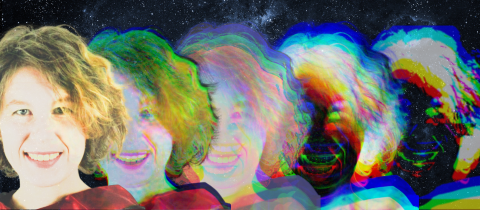We do get some interesting questions. The Lone Ranger was a television series that ran from 1949 to 1957 and recounted the adventures of a former Texas Ranger who with his companion, the Native American Tonto, fought outlaws in the Old West. His trademarks were a black mask and silver bullets!
It is unlikely that the bullets would have tarnished since the concentration of hydrogen sulphide in the desert air of the Old West was undoubtedly very low. Contrary to popular belief, the tarnish on silver is not caused by reaction of the metal with oxygen in the air. The culprit is hydrogen sulphide, a gas that reacts with silver to form solid silver sulphide. Hydrogen sulphide occurs in air both naturally, and as a result of human activity. Many proteins contain sulphur and release hydrogen sulphide when they decompose. The odour of rotten eggs, for example, is due to this compound, and natural gas, which is the end product of the decomposition of organic matter is also a rich source of hydrogen sulphide.
Volcanic eruptions and natural hot springs also release the gas. And it forms as well when carbonyl sulphide, a sulphur compound emitted from volcanoes and deep sea vents reacts with moisture. Then there is human activity. Petroleum contains a variety of sulphur compounds that have to be removed in order to prevent the formation of sulphur dioxide when petroleum burns. In the “hydrodesulphurization” process, petroleum is reacted with hydrogen resulting in the conversion of sulphur compounds to hydrogen sulphide. The hydrogen sulphide is then converted to sulphur, but inevitably some of the gas is released into the atmosphere.
Since there were no petroleum refineries in the old west, nor sea vents or volcanoes, tarnishing of silver was not likely to be extensive. Unless of course the Lone Ranger and Tonto were fond of beans. Human flatus is a rich source of hydrogen sulphide. But there is no evidence that the duo favoured beans, so we can assume that the Lone Ranger’s silver bullets were bright and shiny. Where the masked man got those bullets is more of a mystery. He surely didn’t melt silver over a campfire and pour it into moulds. Lead bullets can be made that way because lead has a relatively low melting point at 327oC. But silver melts at a scorching 960oC, and you don’t get that over a campfire. You also need a graphite mould to stand up to that temperature.
Silver bullets can be made, but it isn’t easy. And it isn’t necessary either. Lead bullets do a very good job. Unless of course, you have to confront a werewolf. Then you better know where to find a silver ingot, a gas furnace and a graphite mould. To keep your bullets nice and shiny if you are not in a desert, you’ll need to coat then with a cellulose nitrate lacquer, better known as clear nail polish, or wrap them in a silver nitrate impregnated cloth. The silver nitrate reacts with the hydrogen sulphide in the air preferentially, leaving the silver bullet untarnished, ready for any lurking werewolves.
The Lone Ranger only fired his silver bullets to disarm, never to kill. He often left a silver bullet behind after he had righted an injustice. Clayton Moore, who played the Lone Ranger, made many personal appearances to promote the show and would give out “silver” bullets to fans as souvenirs. No problem with tarnishing. The bullets were made of aluminum!
I suspect this little discussion will have reminded some of you of those “thrilling days of yesteryear” and you can probably hear the William Tell overture ringing in your ears.







